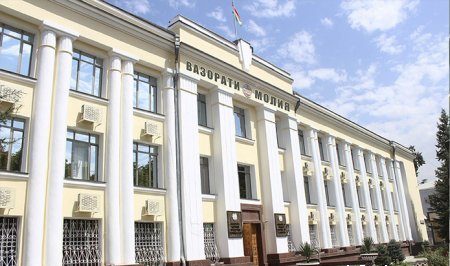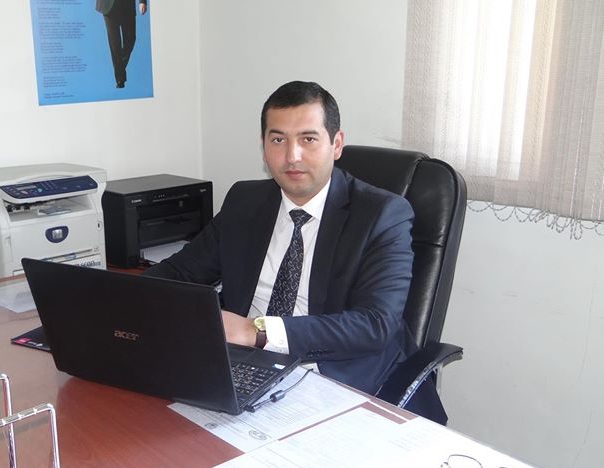Tajik authorities reject the conclusions of international experts that the country’s budget is not transparent. However, experts say that the number of secret budget items has only grown in recent years.

Tajikistan was at the bottom of the list in the global Open Budget Survey Index for 2020.

Uktam Jumayev, an expert on state budget transparency and accountability at the Open Society Institute Soros Foundation-Tajikistan (he is also a country researcher for the International Budget Partnership), explained to CABAR.asia that some budget documents in the country contain minimal information.
“At the stage of budget execution and control, the annual report was not published. Also, the audit report is not available to the public. No civilian versions of the annual, quarterly and audit reports are produced or published,” he said.
Moreover, he said, the budget process is characterized by an “almost total lack of transparency” and a low level of public participation in its formation.
According to the Open Budget Index, Tajikistan with 17 points (insufficient or no transparency) out of a possible 100 ranks 101st out of 117 countries. At the same time, the world average is 45 points (limited transparency).
Neighboring Kyrgyzstan scored 63 points (substantial transparency), Kazakhstan 58 (limited). Uzbekistan and Turkmenistan were not included in the ranking.
Tajikistan was included in the Open Budget Index in 2012, receiving only 17 out of a possible 100 points. The highest score of 30 (81st among 102 countries) was achieved in 2016.
Ministry of Finance objects and promises to launch new website
Tajik Finance Minister Faiziddin Kakhkhorzoda said at a press conference in early August that he had not yet familiarized himself with the updated Open Budget Survey rating.
“I think we should read it and if there are any inaccuracies, we should offer the authors of the rating to reconsider their estimates. We need to clarify where they got the information on the basis of which they came to such conclusions,” the minister said.
According to him, the Ministry of Finance has strengthened cooperation with international development

partners in recent years as part of the established order in the country.
“We do not know by what criteria, using what information they came to such conclusions. I can responsibly say that all figures related to the budget are available on our website, except figures on defense, law enforcement and judiciary, prosecution, which are classified as classified information,” said the Minister.
He said that in the near future a new and better site of the Ministry of Finance will be launched, where detailed information on all areas of the financial sector will be posted.
“In any case, thank you for the assessment. We will know where our shortcomings are and will try to improve the availability of information and, eventually, to be not at the end of the rating, but at the 30th or at least the 40th place,” he added.

According to experts, indeed, over the past three years, after the appointment of Kakhkhorzod as head of the agency, data on the execution of the budget have become more accessible. Before that, such information was posted on the website of the Ministry of Finance with long delays, and it naturally lost its relevance to some extent. For example, data on budget execution for the first quarter of 2019 were published only in July of that year. This year, information for the same period appeared on the ministry’s website in mid-April, and semiannual information in July, that is, three months earlier than in 2019.
Perhaps this change was facilitated by a government decree three years ago that instructed the Ministry of Finance to publish on its website data on budget execution for each quarter in a timely manner, in the month following that period.
However, the Ministry of Finance of Tajikistan still does not publish data on the civil budget, a non-technical version of the state budget, which is prepared so that the general public can better understand what the government spends its money on.
By comparison, Kazakhstan has been publishing a civil budget since 2011.
What is missing?
Uktam Jumayev, a country researcher for the International Budget Partnership, told CABAR.asia that the Open Budget Index is compiled through several cross-checks: a survey of independent experts, data analysis and comments from the Finance Ministry.
“In the end, we calculate everything and draw conclusions,” he said.
Among the main problems that hamper budget transparency, he primarily cited untimely publication of content and scant information in published documents.
“That is, the completeness of information that should be in these documents does not meet the requirements of international standards,” Jumayev explained.
In addition, not all budget documents meet the content requirements. For example, about 7-8 additional documents must be attached to the draft budget, to which the people must have access before the law is passed.
“But these documents, which should disclose more detailed information, are unfortunately missing,” the specialist said.
Akbar Saidov, a financial analyst who has experience in the fiscal sector of the republic, agrees with the shortcomings indicated in the study.
“The published approved state budget does not even contain a breakdown of data for each ministry and agency, the information on the expenditures of individual sectors is summarized and given in one paragraph. For example, the data on “housing, environmental protection and forestry,” “industry and construction,” said the analyst.
Experts also drew attention to the fact that the budget contains a paragraph “other expenses,” for which this year about 15% of the budget is allocated (more than 3 billion somoni, or more than US$262 million). It unknown what those funds will be spent on.

Independent journalist Valentina Kasymbekova says that over the past ten years, 22 lines were removed from the published budget law. In particular, this includes information on defense spending and the financing of law enforcement and the judiciary and the prosecutor’s office.
“Furthermore, the budgets of the upper and lower houses of parliament, the Central Commission for Elections and Referendums, the Executive Office of the Tajik President, the Civil Service Administration, the committees under the Tajik government, the expenditures for the foreign missions of the authorities and administration, airplane charters and other expenses were not available to the public”, Kasymbekova said.
Earlier, according to the journalist, these data were open.
“It is quite obvious that the well-being and security of Tajikistan was not harmed by this”, says Kasymbekova.
A Tajik economist who requested anonymity said authorities are painfully aware of anyone’s attempts to influence budget policy. According to his calculations, a total of about 20 percent of budget spending is now in the shadows.
“The authorities believe that the allocation of budgetary funds is their personal monopoly. They fear that at some point, people will first become interested in the expediency of spending, and then there may even be a question of civil control over the use of budgetary funds,” says the economist.
Besides, according to him, the authorities also try to hide the salaries of some categories of state employees. First of all, these are salaries of law enforcement agencies, courts, prosecutors, the amount of which is actually relatively small.
“People will find it difficult to explain where officials get money for expensive cars and luxurious mansions on such low incomes,” the CABAR.asia interlocutor said.

